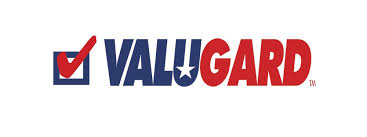For decades, the Passat has been one of Volkswagen’s core models. Having once shared its platform with the Audi Fox, a precursor of the modern A4, it now is based on the PQ46 platform and is related to the sixth-generation Golf. That will soon change, however, according to an outpouring of information (and design sketches) on the next-generation European-market Passat. That Passat—which is different from the U.S.-market Passat sold here—will migrate to the VW’s new MQB architecture shared with the seventh-generation Golf, the Audi A3, the 2016 TT, and a number of further VW Group models. Our Passat, on the other hand, won’t switch to the new platform—at least not for a while.
Volkswagen’s information dump includes the big news that the next Euro Passat will be nearly 200 pounds lighter than the current model, in addition to outlining a number of MQB-specific features and cutting-edge assistance and telematics systems. For the first time, the Passat will offer a fully digital TFT instrumentation similar to the TT’s digital dash, complete with two- and three-dimensional graphics modes. There also is a trailering assist function, advanced automatic parking, a vastly expanded infotainment system, and a plethora of parking cameras and sensors. Today’s optional Xenon headlights make way for one of three levels of Audi-like LED headlights and taillights.
Just as important as the electronics are the engines. The Passat will be available with VW’s next-generation diesels, including a 120-hp 1.4-liter TDI; two 2.0-liter TDI engines with 150 and 192 horsepower; and a top-of-the-line twin-turbo 2.0-liter TDI with 240 horsepower. Recently, VW hinted at an even more powerful variation of the top-dog twin-turbo engine with over 280 horsepower. Consider us—well, Europeans—excited.
The gasoline-fed engine portfolio includes a 125- or 150-hp 1.4-liter TSI, a 180-hp 1.8-liter TSI, a 220-hp 2.0-TSI, and even a 280-hp 2.0-liter TSI. Down the road, there could be a turbocharged 3.0-liter V-6, too. VW’s 4MOTION all-wheel drive is optional, and buyers can choose between a six-speed manual and a seven-speed dual-clutch automatic. In the future, way down the road, VW will offer a ten-speed dual-clutch automatic transmission.
- 2014 Volkswagen Passat Sport 1.8T Automatic Tested: Sport is as Sport Does
- 2014 Volkswagen Jetta SE Tested: Curb Your Enthusiasm
- Volkswagen Passat Research: Full Pricing, Specs, Reviews, and More
Aside from the usual gaggle of gas and diesel engines, Volkswagen has also confirmed a plug-in hybrid powertrain with a gas-fed 156-hp 1.4-liter TSI engine and a 109-hp electric motor. Total output will stand at 211 horsepower, and the sedan can travel up to 31 miles on electric power alone; overall range stands at a mighty 621 miles.
VW has also supplied a few sketches of the next Passat, which are highly promising because they show an evolution of the current car’s handsome theme. The new Passat should wear much more coherent proportions, as well as a low front end with a strongly horizontal design theme. Of course, the sedan will be joined by yet another Passat station wagon.
So what does this mean for us here in the U.S.? Well, upscale sedans and wagons—especially those priced dearly—just don’t cut it in the mainstream mid-size segment, so we’ll be getting a facelift of the current, Tennessee-built model instead of this all-new Passat. All isn’t lost, however, since in a few years we, too, will get an MQB-based Passat. Like the today’s U.S.-market sedan, we expect it to be downgraded somewhat from the European model, while also being somewhat bigger.
from Car and Driver Blog http://ift.tt/1t06dYo
via IFTTT









